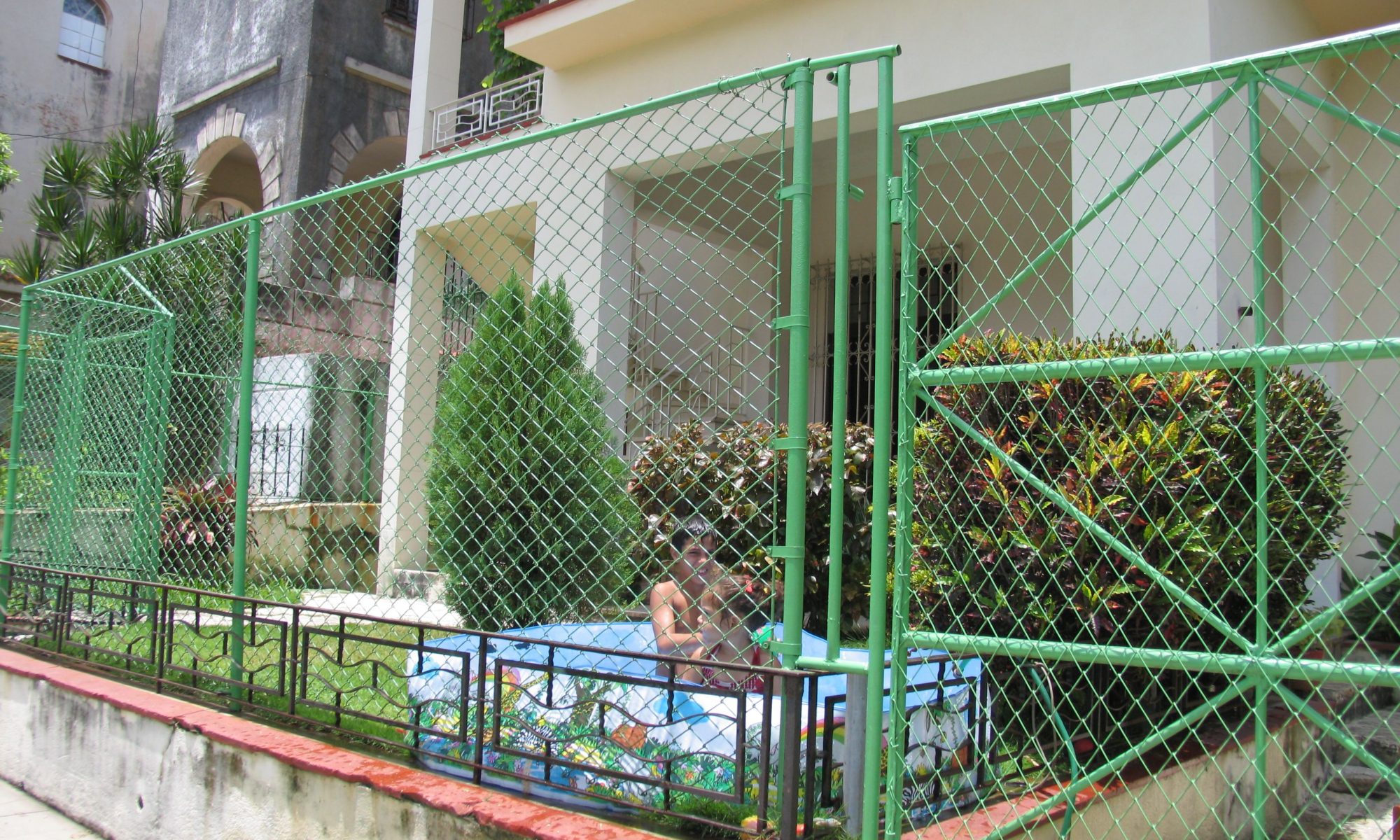Like most foreigners who spend a lot of time in Cuba, I became accustomed over the years to the fact that the vast majority of houses and apartment buildings featured barren, gray façades and walls. Until 1994 when the Cuban government suddenly reversed course and made maintenance of homes the citizens’ responsibility, it had been illegal to carry out repairs on one’s own home without government authorization. Paint, cement, tiles, pipes and the like were distributed less according to need (as was apparent from the housing stock and condition of public recreational facilities) than according to political position and a system Cubans called sociolismo (buddyism, or a reliance on connections as opposed to socialismo, socialism). For me, the sight of houses whose owners had acquired the resources for fresh coats of paint and occasional acquisition of a plastic kiddy pool—next door to the usual drab exteriors of other homes—was shocking. It only highlighted the extreme class divides that have emerged in Cuba, usually in the very same neighborhoods. Santos Suárez, Havana, 2011.
